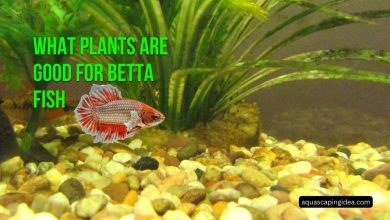Treatment For Velvet Disease In Betta Fish

Betta fish, also known as Siamese fighting fish, are a popular freshwater aquarium fish native to Southeast Asia. These vibrantly-colored fish are well loved for their flowing fins and unique personalities. However, bettas are prone to a number of diseases, including velvet disease.
Velvet disease is caused by single-celled parasites that attack the skin and gills. This disease is identifiable by a dusty gold coating on the fish’s skin and frayed fins. Velvet spreads rapidly, making quick treatment essential. If left unchecked, most infected bettas will die within days.
Saving Bettas from Deadly Velvet
The good news is that velvet is highly treatable if caught early. With appropriate identification, medication, and tank management, bettas can make a full recovery. This article will provide readers with the information needed to properly treat velvet disease.
Identifying Velvet Disease
The first step in treating velvet is to accurately identify the illness in your betta. Symptoms to look out for include:
- Dusty gold or rust-colored growth on skin and fins
- Increased mucus production
- Frayed fins
- Lethargy
- Loss of appetite
- Flashing against objects
- Labored breathing
These symptoms may initially appear quite subtle but will rapidly worsen without treatment. It is also possible for a betta to carry light velvet infections without outward symptoms. For this reason, quarantining new fish before adding them to your tank can prevent introducing velvet.
If your betta displays any unusual behavior or skin growths, isolate them from tankmates immediately. Use a microscope or high-powered magnifying glass to check for early velvet clusters. Compare your betta’s appearance to healthy bettas to accurately identify this disease. Catching velvet early is key to effective treatment.
Treating Velvet Disease
If your betta has velvet, it is critical to begin treatment right away. While strict tank hygiene and isolation practices can clear up mild cases, most infections will require targeted medication.
Perform a Partial Water Change
Start treatment by replacing 30% of tank water to remove parasites. Use a gravel vacuum to deep clean substrate. Remove activated carbon from filters during treatment, as this can filter out medications.
Increase Tank Temperature
Slowly increase tank temperature to 82-84°F. The warmer water speeds up the betta’s metabolism, strengthening its immune response. Warmer temperatures also speed up the parasite’s lifecycle, making them more vulnerable.
Add Aquarium Salt
Dissolve 1 teaspoon of aquarium salt per gallon of water prior to adding it to the tank. The saline solution helps the betta’s skin heal while destroying velvet parasites. Salt treatments should be temporary, as extended use can harm freshwater fish.
Use Appropriate Medications
Medications specifically designed to eliminate velvet should be used in conjunction with salt and heat treatments. Combining organic treatments like metroplex with chemical options like copper or formaldehyde is most effective. All medications should be used carefully according to instructions.
Treatment should last 10-14 days. Continue daily partial water changes and close monitoring of symptoms during this time. Medications and salt baths may need to be repeated if the velvet persists.
Once the betta shows no further signs of infection, transition back to normal tank temperatures and remove salt and medications. Closely observe fish after treatment to ensure the velvet does not return.
Preventing Velvet Disease
While even well-cared for bettas may develop velvet, strict tank maintenance can reduce outbreak likelihood and severity. Prevention measures include:
- Perform weekly partial water changes
- Test and maintain proper water parameters
- Quarantine new fish before adding to display tanks
- Avoid cross-contamination between tanks, nets, etc
- Feed a high quality, varied diet to support immune health
In most cases, velvet occurs because of an underlying compromise in care. Ensuring consistently clean, appropriately sized tanks with suitable tank mates is key. Monitor fish closely for any signs of stress or disease. With quick treatment guided by the steps outlined here, bettas can make a full recovery from velvet disease.
FAQs
How did my betta get velvet disease?
Velvet is caused by parasites that are often present in tanks and tap water. Changes in tank conditions, introducing infected fish, or a compromised immune system can trigger outbreaks.
Can velvet spread to my other fish?
Yes. Velvet is highly contagious and can rapidly infect tankmates. Isolate infected fish immediately.
Is velvet the same thing as ich?
No. While they appear somewhat similar visually, ich (white spot disease) and velvet are caused by two different parasites. Treatments can differ.
Can I eliminate velvet from my tank and decorations?
Strong disinfectants, thorough gravel washing, emptying filters, and allowing tanks to fully dry out can destroy lingering parasites. However, velvet can reoccur easily if introduced by new fish. Maintain quarantine procedures.
How long does it take for velvet symptoms to appear?
Depending on current tank conditions, parasites reproduce every 6-24 hours. Visible symptoms therefore normally manifest within 2-7 days after infection.
Is there a natural cure for velvet in bettas?
While certain herbal treatments may claim effectiveness against velvet, they have not been conclusively proven. Medications tailored to treat velvet, in conjunction with changes in tank environment, remain the most reliable cures.
Conclusion
Velvet disease causes suffering and death for countless beloved pet bettas annually. However, as this article covered, velvet need not be a death sentence with appropriate care. By recognizing symptoms early and swiftly beginning treatment, fish owners can eliminate velvet infections and save their bettas. With vigilant tank maintenance and swift care when diseases emerge, bettas can have long, vibrant lives ahead.



